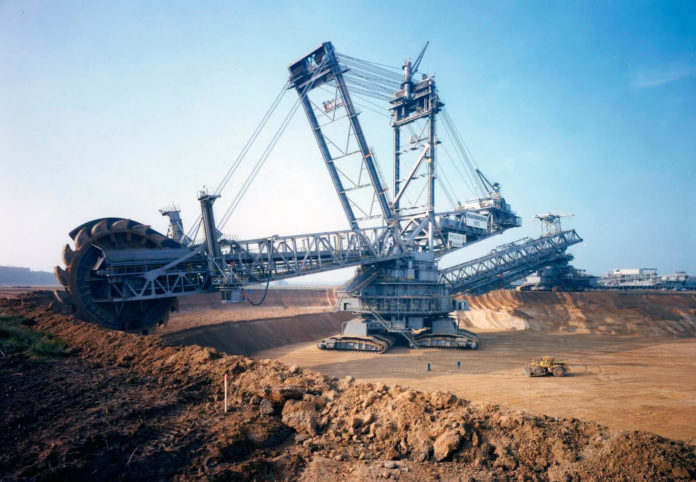One of the world’s heaviest land vehicles is in use at the Garzweiler open pit lignite mine.
It can move 240,000 cubic meters of earth per day, it’s as heavy as more than 8,600 cars, and it’s as tall as the Statue of Liberty – these are just some of the outstanding features of bucket wheel excavator Bagger 288. It has been in operation at the Garzweiler open pit lignite mine since 2001, prior to which it was used to dig coal at the Hambach mine 22 kilometers away. When it was built in 1978, the “Bagger 288” was the largest bucket wheel excavator in the world, and it is still one of the biggest land vehicles today.
Machines used to mine large volumes of minerals over longer periods must above all be efficient and economical. And this is where thyssenkrupp’s continuous mining technology comes into play. Bucket wheel excavators are the ideal solution: They can move as much lignite and overburden in a day as 40,000 workers – 240,000 cubic meters, equivalent to more than 10,000 dump truck loads. The material is picked up by the bucket wheel and transported on conveyors over three meters in width. The overburden is dumped by spreaders.

Bagger 288 gigantic dimensions
The dimensions of bucket wheel excavator Bagger 288 are impressive: 225 meters long, 96 meters high, a bucket wheel made up of 18 buckets and measuring 22 meters in diameter. The wheel is driven by four 840 kW motors. The aggregate drive power of the buckets of 3,360 kW is equivalent to that of more than 30 compact cars. Thick cables deliver 30,000 volts of power to the “Bagger 288”, which features more than 120 kilometers of cabling.
Tipping the scales at 13,500 tons, the “Bagger 288” is a true heavyweight. But the large surface area of its twelve crawlers (eight at the front, four at the rear) mean that when driving over soil, gravel or even grass the excavator leaves tracks no deeper than a human footprint.
This was an important factor when it came to moving the bucket wheel excavator from the Hambach mine to Garzweiler. With a maximum travel speed of ten meters per minute, a minimum turning radius of 100 meters and a maximum gradient capability of one in 18, it took the “Bagger 288” three weeks to cover the 22 kilometer distance.
Cab
One operator controls all excavator movements from the cab. All movements of the machine and its components are protected against accidents by safety devices. The cab can be raised and lowered like an elevator to ensure the operator always has a clear view.
Slewing gear
Between the undercarriage and superstructure of the Bagger 288 excavator is a huge, 20 meter diameter ball bearing slewing ring. The entire superstructure can be rotated via this bearing to move the bucket wheel into the required position.
Hoists
The seventy meter long boom is raised and lowered using a gigantic rope hoist. For safety reasons the entire system is designed redundantly.
Service cranes
To remove and replace damaged machine parts the “Bagger 288” has 23 cranes at various points with lifting capacities of one to 35 tons.
BAGGER 288 SPECIFICATIONS:
- Type: Bucket-wheel excavator
- Manufacturer: ThyssenKrupp
- Production: 1978
- Length: 220m
- Width: 46m
- Height: 96m
- Weight: 13,500t
- Propulsion: 12 x caterpillar tracks
- Gross power: 16.56MW of externally supplied electricity
- Speed: 2 to 10 meters per minute (0.1 to 0.6 km/h)
- Blade capacity: 24m in diameter, 18 buckets each holding 6.6 cubic or 7.2 short tons
















































